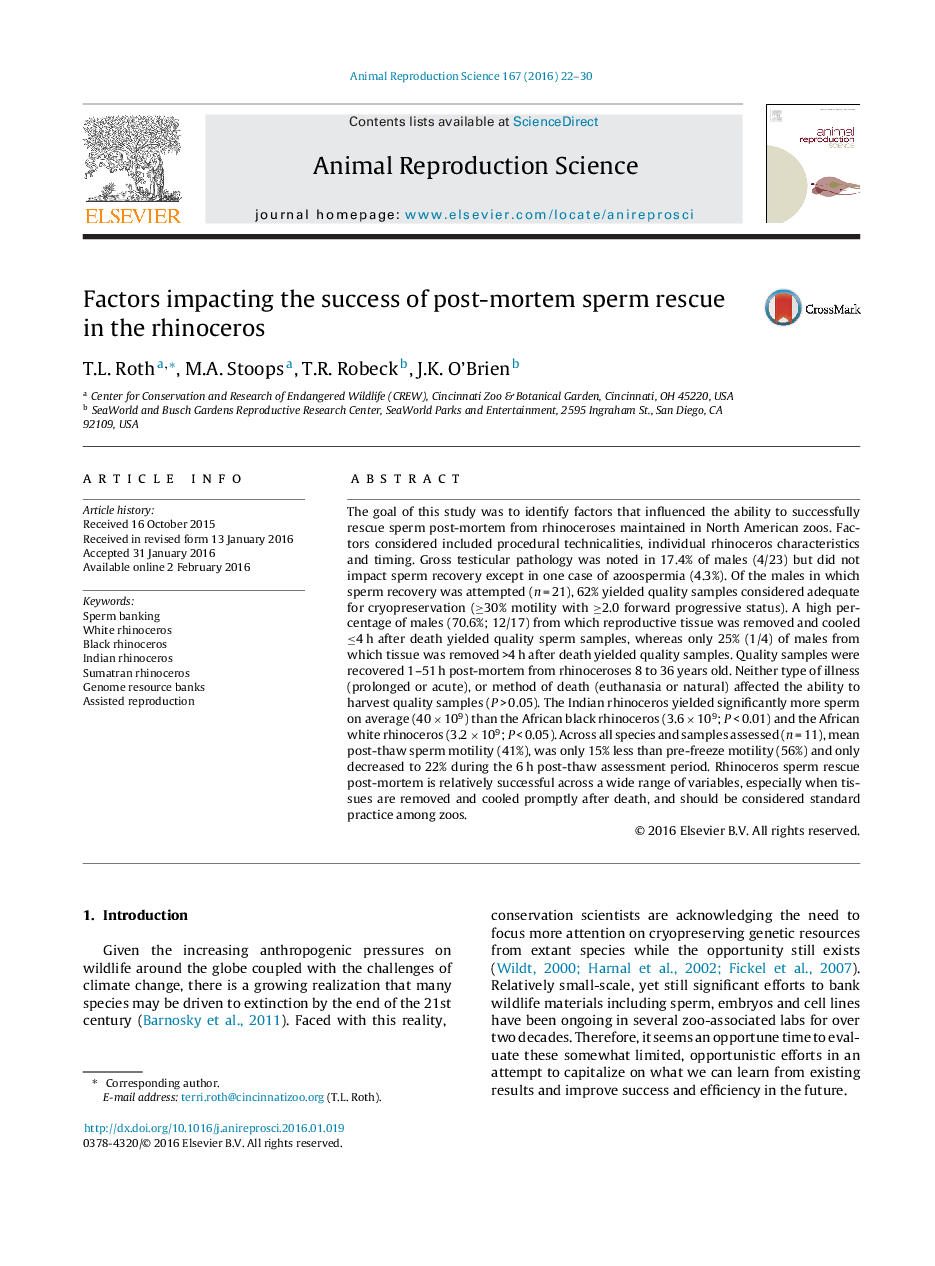| Article ID | Journal | Published Year | Pages | File Type |
|---|---|---|---|---|
| 2072605 | Animal Reproduction Science | 2016 | 9 Pages |
The goal of this study was to identify factors that influenced the ability to successfully rescue sperm post-mortem from rhinoceroses maintained in North American zoos. Factors considered included procedural technicalities, individual rhinoceros characteristics and timing. Gross testicular pathology was noted in 17.4% of males (4/23) but did not impact sperm recovery except in one case of azoospermia (4.3%). Of the males in which sperm recovery was attempted (n = 21), 62% yielded quality samples considered adequate for cryopreservation (≥30% motility with ≥2.0 forward progressive status). A high percentage of males (70.6%; 12/17) from which reproductive tissue was removed and cooled ≤4 h after death yielded quality sperm samples, whereas only 25% (1/4) of males from which tissue was removed >4 h after death yielded quality samples. Quality samples were recovered 1–51 h post-mortem from rhinoceroses 8 to 36 years old. Neither type of illness (prolonged or acute), or method of death (euthanasia or natural) affected the ability to harvest quality samples (P > 0.05). The Indian rhinoceros yielded significantly more sperm on average (40 × 109) than the African black rhinoceros (3.6 × 109; P < 0.01) and the African white rhinoceros (3.2 × 109; P < 0.05). Across all species and samples assessed (n = 11), mean post-thaw sperm motility (41%), was only 15% less than pre-freeze motility (56%) and only decreased to 22% during the 6 h post-thaw assessment period. Rhinoceros sperm rescue post-mortem is relatively successful across a wide range of variables, especially when tissues are removed and cooled promptly after death, and should be considered standard practice among zoos.
